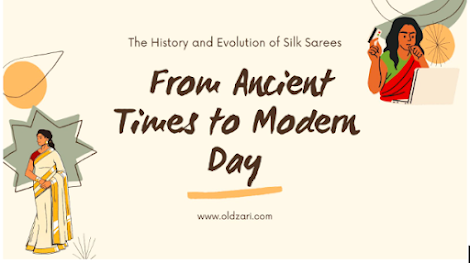The History and Evolution of Silk Sarees: From Ancient Times to Modern Day
Introduction:
Silk sarees are a staple of traditional Indian fashion, with a rich history dating back to ancient times. These luxurious fabrics have undergone many changes and trends over the centuries, and continue to be a symbol of cultural heritage and fashion today. In this article, we will explore the history and evolution of silk sarees, from their origins in ancient India to their place in modern fashion.
Exploring the History and Evolution of Silk Sarees in India
Silk sarees are a staple of traditional Indian fashion, with a rich history dating back to ancient times. The first recorded use of silk in India dates back to the Indus Valley Civilization (2500 BCE - 1900 BCE), where silk fabrics were used for clothing and trade.
Silk sarees became popular in India during the Mughal period (1526 - 1857), when the royal courts were adorned with luxurious silk fabrics. The Mughals brought the art of silk production to India, establishing sericulture (silk production) in the country.
In modern times, silk sarees have gained global recognition for their intricate designs and fine craftsmanship. There are various types of silk sarees, including Kanchipuram, Banarasi, Mysore, and KSIC (Karnataka Silk Industries Corporation). Each type has its own unique characteristics, such as the type of silk used, the method of production, and the design motifs.
Silk sarees are not only a symbol of cultural heritage, but also a reflection of the changing times and trends in fashion. Today, silk sarees are worn not only on special occasions, but also as everyday wear, with a variety of styles and designs available to suit different tastes and preferences.
As the demand for silk sarees continues to grow, the art of silk production has undergone significant changes, with the introduction of modern techniques and machinery. Despite these changes, the traditional methods of silk production are still practised in some parts of India, keeping alive the rich cultural heritage of silk sarees.
In conclusion, silk sarees have a long and rich history in India, evolving from ancient times to the present day. They are a symbol of cultural heritage and a reflection of changing fashion trends. The art of silk production, while evolving with the times, still holds onto its traditional roots, keeping alive the cultural significance of silk sarees.
Conclusion:
In conclusion, silk sarees have a long and rich history in India, evolving from ancient times to the present day. They are a symbol of cultural heritage and a reflection of changing fashion trends. The art of silk production, while evolving with the times, still holds onto its traditional roots, keeping alive the cultural significance of silk sarees. Whether worn on special occasions or as everyday wear, silk sarees continue to be a beloved and enduring symbol of Indian culture and style.



Comments
Post a Comment